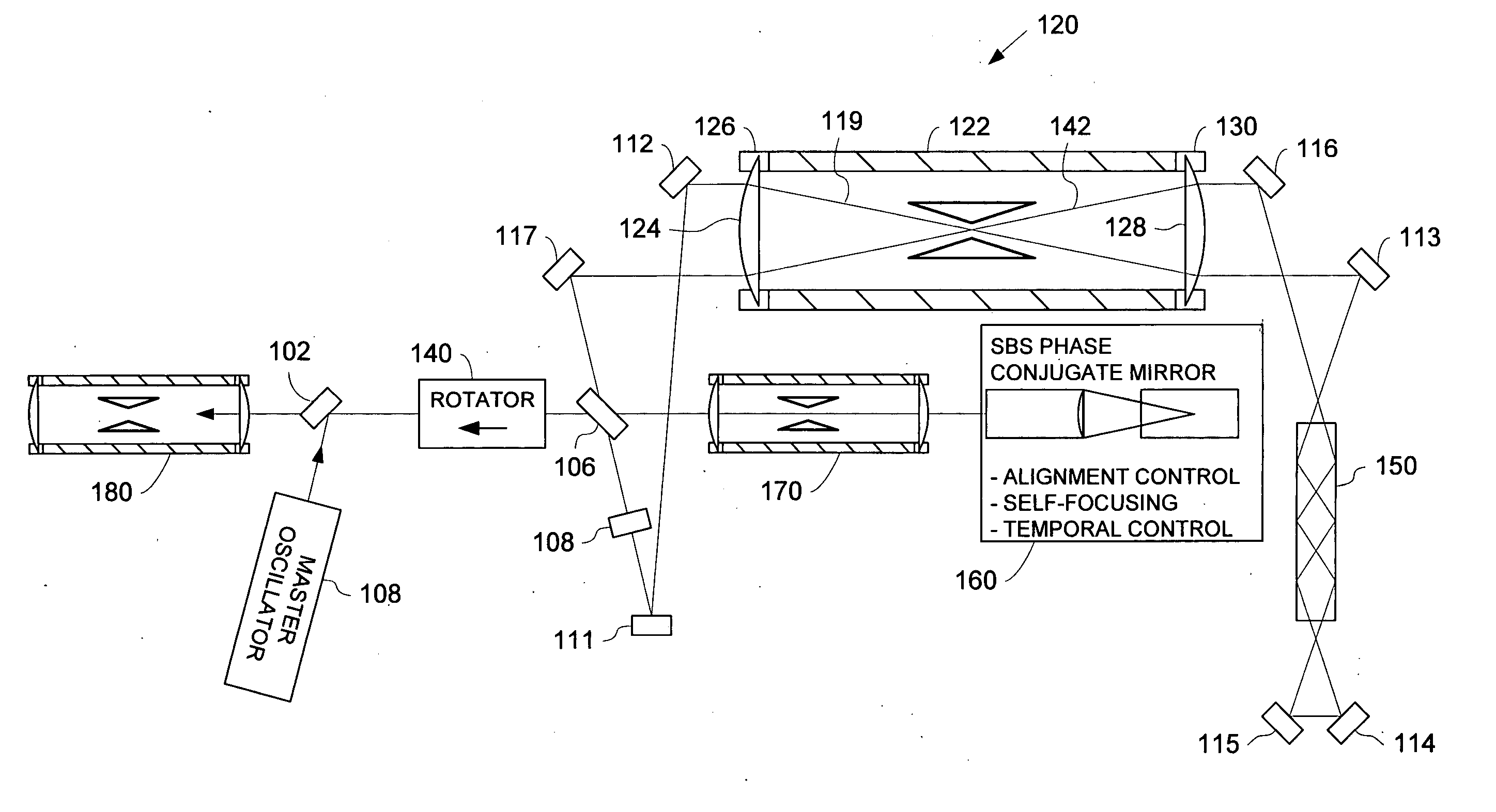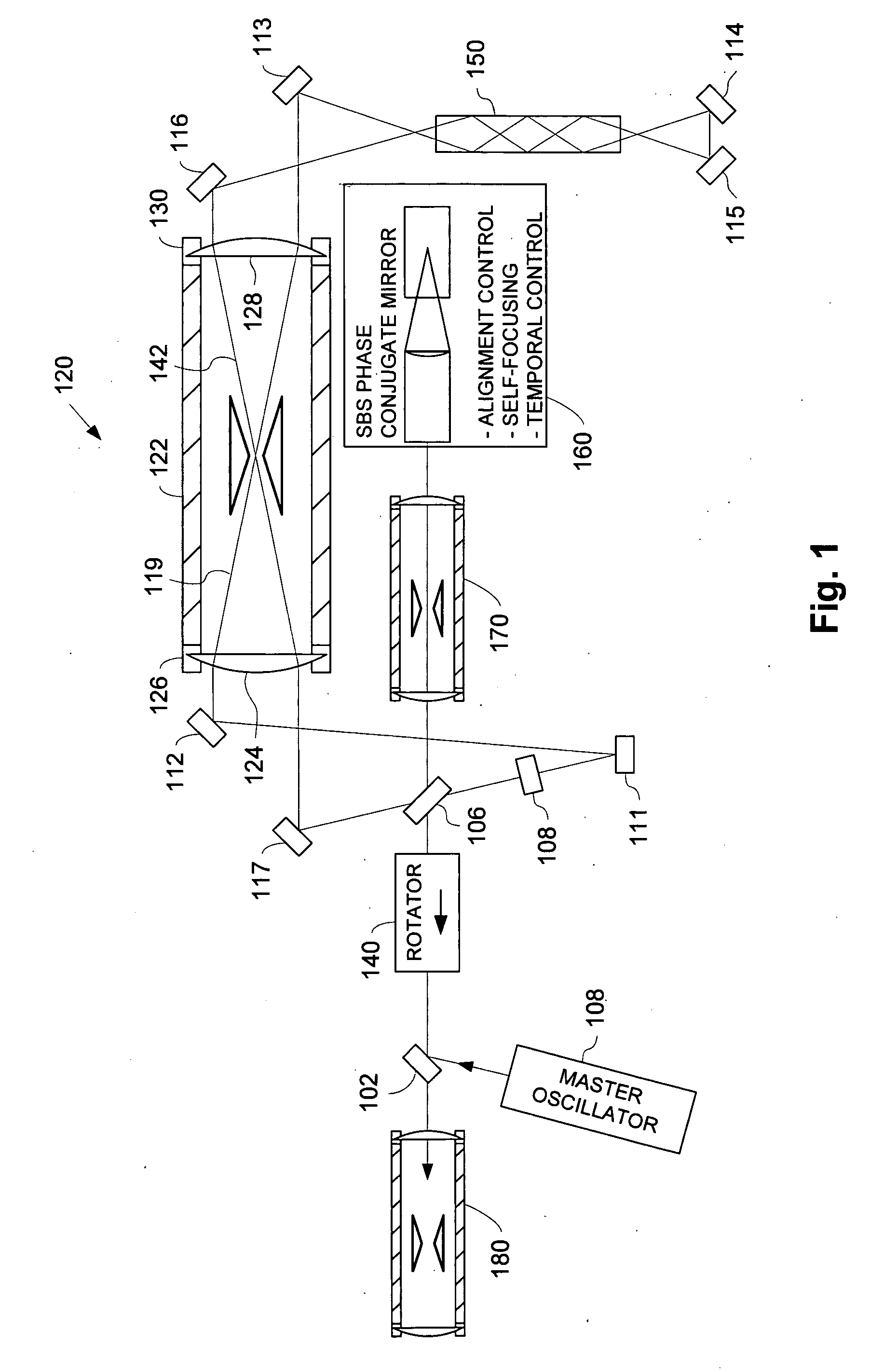Relay telescope for high power laser alignment system
a laser alignment and laser technology, applied in the field of high-power laser systems and mirror systems for high-power lasers, can solve the problems of affecting the production throughput of lasers with both sufficient energy and sufficient repetition rate, affecting the production throughput of lasers at affordable costs, and unable to provide sufficient intense or deep treatment of shot peening, etc., to achieve the effect of avoiding damage to the baffle and reducing the fluence level of the impact area of the blocked beam
- Summary
- Abstract
- Description
- Claims
- Application Information
AI Technical Summary
Benefits of technology
Problems solved by technology
Method used
Image
Examples
Embodiment Construction
[0036] A detailed description of embodiments of the present invention is provided with reference to FIGS. 1-10.
[0037] The basic architecture of the master oscillator / power amplifier configuration with a regenerative laser amplifier including an SBS phase conjugator mirror system and relay telescope with a baffle is shown in FIG. 1. The embodiment of FIG. 1 is an improved version of a similar amplifier described in U.S. Pat. No. 5,239,408, which is incorporated by reference as if fully set forth herein. The amplifier system of FIG. 1 includes a rotator 140, such as a Pockels cell or Faraday rotator, a first intra-cavity relay telescope 120, a slab-shaped gain medium 150, a second intra-cavity relay telescope 170 and an SBS phase conjugator / mirror system 160. The slab 150 is enclosed in a pump cavity (not shown). Two polarizers 102 and 106 are also included for capturing an input pulse, and extracting an output pulse, respectively. Seven flat, highly reflecting mirrors 111, 112, 113,...
PUM
| Property | Measurement | Unit |
|---|---|---|
| grazing angle | aaaaa | aaaaa |
| pore size | aaaaa | aaaaa |
| focal length | aaaaa | aaaaa |
Abstract
Description
Claims
Application Information
 Login to View More
Login to View More - R&D
- Intellectual Property
- Life Sciences
- Materials
- Tech Scout
- Unparalleled Data Quality
- Higher Quality Content
- 60% Fewer Hallucinations
Browse by: Latest US Patents, China's latest patents, Technical Efficacy Thesaurus, Application Domain, Technology Topic, Popular Technical Reports.
© 2025 PatSnap. All rights reserved.Legal|Privacy policy|Modern Slavery Act Transparency Statement|Sitemap|About US| Contact US: help@patsnap.com



